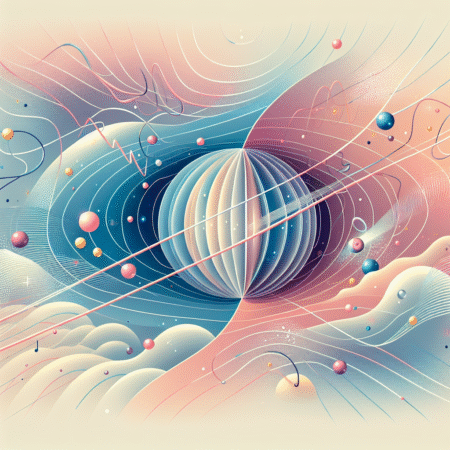Quantum Magic: Waves and Particles
Have you ever pondered the peculiar nature of reality? Imagine watching a dance where sometimes the dancers spin like delicate waves, and other times they appear as strict, solid figures—this is the mesmerizing world of quantum mechanics. In “Waves and Particles: The Dance of the Quantum World,” you will explore how matter and light exist as both waves and particles. This duality challenges everything you thought you knew about the universe, consciousness, and reality itself.
Understanding waves and particles offers a glimpse into a reality far stranger than our everyday experiences. Light can appear as a beam, a wave rippling through space, or as tiny particles called photons. Similarly, electrons, usually seen as particles, can spread out like waves. This fascinating interplay redefines our perception of existence and raises profound questions about the essence of life itself.
Experiments That Shook the Foundations
One of the most groundbreaking experiments in quantum mechanics is the double-slit experiment. Imagine throwing pebbles into water—each stone creates a pattern of ripples. Now, if you throw a single pebble through two slits, something bewildering happens: it behaves like a wave, creating a pattern as if it traveled through both slits simultaneously!
But here’s the kicker: when you try to observe which slit the pebble goes through, it behaves like a particle, and the wave pattern vanishes. This peculiar behavior suggests that reality changes based on observation. Are we mere spectators in a vast cosmic play? Or do our interpretations shape the outcome?
Many scientists, such as Niels Bohr and Albert Einstein, debated the implications of this experiment. For Bohr, the act of observation was vital. He proposed that we cannot separate the observer from the observed. Einstein, however, famously said, “God does not play dice with the universe,” hinting at an underlying order beyond randomness.
Both perspectives offer enriching insights into our understanding of reality, inviting you to contemplate your role in this dance of existence.
Real-World Ramifications
Quantum mechanics isn’t just academic theory. It has real-world applications that impact your daily life. Think about lasers. They use principles from quantum theory. Your smartphone, computers, and even medical imaging rely heavily on these strange rules of the quantum world.
But technology isn’t the only arena affected by quantum mechanics. As advancements continue, we may find ourselves re-evaluating ethical frameworks. Imagine decisions made on data collected through quantum computing—decisions that could impact lives directly.
Moreover, quantum mechanics prompts us to question free will. If our actions derive from probabilities shaped by a series of quantum events, how much control do we truly have over our lives? Pondering these questions can lead to a deeper understanding of human experience and the universe.
Waves and particles challenge you to consider the interconnectedness of all things. What does it mean to exist in a universe where reality is not as solid as it seems? When particles can exist in multiple states, it nudges you to rethink your perceptions of self and consciousness. Could we all be part of a grander cosmic tapestry?
The mind can expand with these questions. They challenge your understanding of existence and your place within it. As you step out into the world, consider these ideas. How does your perception shape your reality? What role do you play in this intricate dance of waves and particles?
Continue Your Tech Journey
Explore the future of technology with our detailed insights on Artificial Intelligence.
Stay inspired by the vast knowledge available on Wikipedia.
OPED_V1

